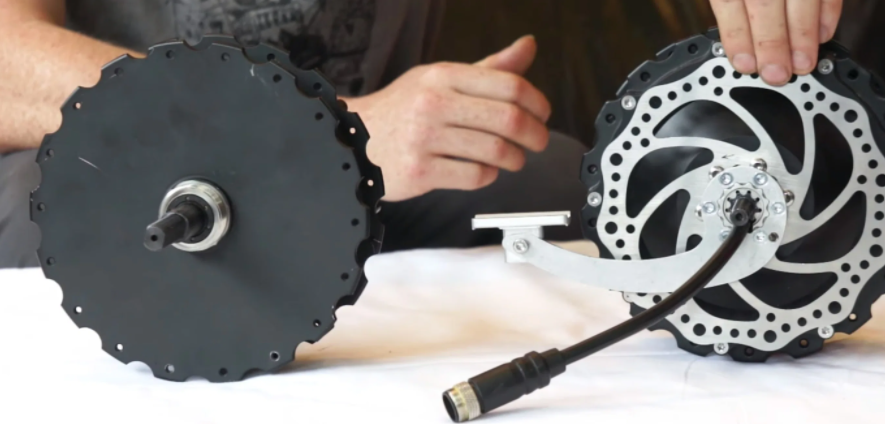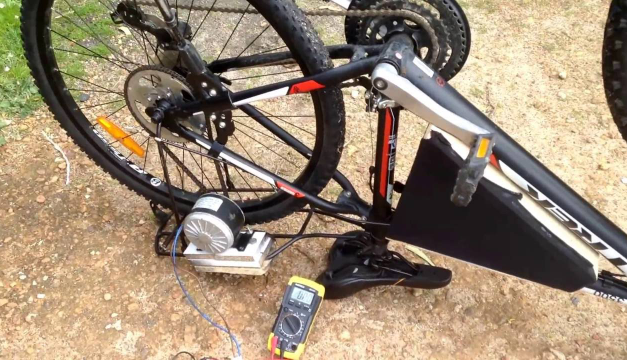Rechargeable electric bikes are currently booming in the U.S., even during the COVID-19 pandemic. We are all looking for a more sustainable and efficient lifestyle, now more than ever.
Electric bikes promote economic, transportation, and environmental benefits. Besides, cycling can help your fitness as it requires full-body activities. But do electric bike charges while pedaling?
Shortly, the answer is yes. An electric bike with regenerative braking charges its battery while you are pedaling. But these bikes are rare and their mechanism is quite complex.
Fear not! You will get to know about regenerative brakes and their efficiency in e-bikes from this article. Also, you will have a basic idea of how much electric power you can generate while pedaling an electric bike. So, let’s get to it!
What Is Regenerative Braking For E-bikes?
Regenerative braking is a mechanism that self-generating electric bikes offer on either one of the wheels to generate electrical currents through brakes. The bike’s kinetic energy transforms into electrical energy and runs back into the e-bike batter in this process.

Regenerative technology is a breakthrough concept for eco-friendly electric vehicles. It was introduced in the early 2000s and is mostly a common feature in electric cars like the Tesla Roadster.
Although this feature is still somewhat rare in e-bikes, different manufacturers are trying to improve the technology to a bike-friendly state.
How Does Regenerative Braking Work On E-bikes?
Imagine riding on a bus, and suddenly it hits the break. As a result, you will move forward a bit, even if you tried to stay completely still the whole time. This is due to momentum and inertia. Here, the kinetic energy converts into mechanical energy through body movement.

Now, let’s understand an e-bike’s regenerative braking in the same method. When you hit the brakes while riding a regular bike, the kinetic energy transforms into heat through the tires and the disc brakes.
But, unfortunately, this excess energy is lost in the environment. A regenerative braking system lets you collect this extra energy and use it to charge your electric bike’s battery.
So, where does this additional energy go?
Electric bikes generally feature hub and mid-drive motors. But these motors do not support regenerative braking. Only electric bikes with direct-drive motors can perform this energy transmission.
When you use the re-gen feature, a signal from the motor controller turns the direct-drive motor into a generator. This generator then converts some of the kinetic energy into electricity and stores it in the battery or capacitors.
Finally, this additional energy is then used to re-accelerate your electric bike. Regenerative braking increases the bike’s average driving range. However, this system is more suitable for the daily commute or mountain biking, where you have to hit the brakes more frequently.
Do Electric Bike Charges While Pedaling?
Yes, you can recharge your electric bike while pedaling. But, there is a twist! The extra energy is not produced from the pedals. As mentioned before, regenerative energy actually comes from the braking system.

However, not all electric bikes come with a re-gen feature. Some manufacturers, such as Rad Power, Aventon, Electra, Schwinn, etc., are some of the famous ones currently dominating the e-bike market.
Electric pedal-assist bike or the Pedelec is the most common type of e-bike available. The motor provides additional acceleration while the rider pedals the bike. Generally, this extra energy is transmitted to the rear wheels. A rear-wheel-drive e-bike is more beneficial as it provides better handling and weight distribution.
However, suppose you are wondering, “is it possible to convert pedal energy to electricity while riding?”. In that case, the answer will disappoint you. It’s not possible as most of the pedal energy is used to run the bike.
However, if you are riding a pedelec, you have to hit the brakes at some point. And that’s when you convert kinetic energy into electricity.
No matter what type and features you prefer, check out these 750-Watt Electric Bikes to better understand how electric bikes work.
How Much Energy Does Regenerative Braking Save In Ebikes?
This will vary. Typically, it’s around 5-10%. So, if you ride 10 miles, you may be able to go about an extra mile (0.5-1 mile) with the energy saved from regenerative braking.
A regenerative braking system converts the kinetic energy during brakes to charge the electric battery. But, it doesn’t convert enough power for a self-charging electric bike, as it does in an electric car.
Regenerative braking in e-bikes is much less sophisticated and rare than the ones in cars. A car has more mass and momentum. So, the re-gen feature is worthwhile as cars can conduct higher regenerative power.
What Are The Advantages Of A Regenerative Braking System On An Electric Bike?
Some benefits of a regenerative braking system on a rechargeable electric bike are mentioned below.
- Regenerative braking is a cost-effective and eco-friendly way of increasing an electric bike’s range and energy conservation.
- Regenerative brake allows consistency in an e-bike riding experience.
- It reduces the squeakiness of an e-bike braking system.
- This feature lessens brake wear and tears by allowing flexibility in pulling the brake levers.
- Regenerative braking is convenient in long-range as it offers some acceleration from the drive motor.
Is Regenerative Braking Safe?
In general, the answer is yes. Most electric bikes with regen feature the direct-drive motor only on the rear wheel. So, the front wheel still features a hydraulic brake. Most riders use the regenerative brake in an e-bike as it is energy efficient.

And, it is sufficient for daily traffic. But if you are riding downhill or in a mountain range, you can surely use the hydraulic brake any time you want.
However, regenerative braking slightly affects the battery capacity over time. Besides, it generates a lot of heat while charging, which is also harmful to lithium-ion batteries. In addition, if the rider constantly takes hard brakes, an uneven distribution of torque arises. This can cause wheel and disc brake wear. These are some issues that can potentially cause problems in the long run, but they are easily avoidable.
Conclusion
Indeed, regenerative braking won’t act as a magic trick to turn your e-bike into a high-speed motorbike. But, it has its perks. After all, who can say no to an extra 5% range increase!
This system is still restrained due to many uncontrollable variables such as wind, torque variations, and terrain. So, the regen feature in two-wheeled vehicles has a long way to go.

